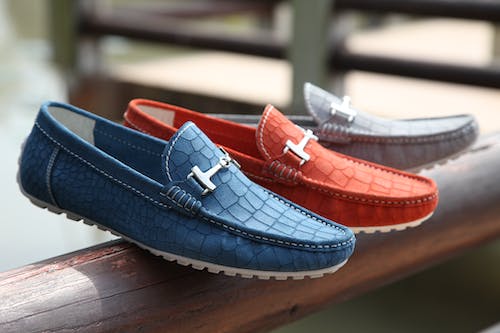
According to the latest findings from Future Market Insights (FMI), the Casual Shoes Market is valued at USD 168.3 million in 2022, with projections indicating a rise to USD 241.9 million by 2032, representing a Compound Annual Growth Rate (CAGR) of 3.7% from 2022 to 2032. These statistics highlight a steady upward trend in the market’s growth over the forecast period. The data underscores the enduring popularity and demand for casual footwear among consumers, indicating promising opportunities for manufacturers and retailers to capitalize on evolving consumer preferences in the footwear industry.
Casual shoes have started to gain traction in nearly every part of the world. People are getting busy in their lives in the post pandemic era, as a result, they are looking for options of foot wear that will go with most of the attires and occasions. Moreover, people are also taking part in various activities that require heavy physical involvement which is also fuelling the casual shoes market.
Women are getting interested in casual shoes too. Various key brands are focusing on development of casual sneakers that are specially fabricated for women and will suit their interests. While, the trends in fashion will keep on changing and will continuously create a need for new kinds and designs of casual shoes which is anticipated to help the market.
Get your Sample Report to Boost Your Industry Knowledge for Valuable Insights! https://www.futuremarketinsights.com/reports/sample/rep-gb-16293
Additionally, the presence of counterfeit products will act as a restraining factor in the casual shoes market. Other factors include the rise in cost for manufacturing due to increasing prices of raw materials. However, the casual shoes market will continue to grow at a decent pace in the forecast period.
Business Growth Drivers:
- Changing Lifestyles: With a shift towards more casual and comfortable attire in both professional and personal settings, there’s an increased demand for casual shoes that offer both style and comfort.
- Fashion Trends: Casual shoes have become a fashion staple, with trends like athleisure and streetwear driving the demand for stylish yet functional footwear.
- Rise of E-commerce: The proliferation of e-commerce platforms has made it easier for consumers to access a wide range of casual shoe options, driving market growth by enhancing accessibility and convenience.
- Innovations in Materials and Designs: Advancements in materials technology, such as lightweight and breathable fabrics, as well as innovative designs, have contributed to the popularity of casual shoes.
- Growing Millennial and Gen Z Population: Millennials and Gen Z consumers prioritize comfort and style, fueling the demand for casual footwear that aligns with their preferences and values.
- Increasing Urbanization: As more people move to urban areas, there’s a growing need for footwear that can withstand the rigors of city life while still offering comfort and style.
- Rising Disposable Income: Higher disposable incomes in many regions have enabled consumers to spend more on discretionary items like footwear, contributing to market growth.
Industry Restraints:
- Competition from Sneaker Brands: The dominance of sneaker brands in the casual footwear market presents a challenge for other types of casual shoes, as they must compete with well-established brands with loyal customer bases.
- Economic Uncertainty: Economic downturns or periods of uncertainty can lead to decreased consumer spending on non-essential items like casual shoes, impacting market growth.
- Supply Chain Disruptions: Events such as natural disasters, trade disputes, or global pandemics can disrupt the supply chain, leading to shortages or delays in the availability of casual shoes and hindering market growth.
- Environmental Concerns: Increasing awareness of environmental issues has led to greater scrutiny of the footwear industry’s environmental impact, prompting consumers to seek sustainable alternatives or reduce overall consumption.
- Counterfeit Products: The proliferation of counterfeit products in the market poses a threat to legitimate casual shoe manufacturers, as it undermines brand reputation and consumer trust.
- Changing Consumer Preferences: Shifts in consumer preferences towards minimalism or niche footwear styles could impact the demand for traditional casual shoes, requiring companies to adapt to evolving trends.
- Regulatory Compliance: Compliance with regulations related to product safety, labeling, and environmental standards adds to the operational costs and complexities for casual shoe manufacturers.
Key Takeaways from the Custom Shoes Market Study
- E-commerce is expected to be the leading sales channel during the forecast period. As customer preferences shift, more individuals prefer internet retailing to traditional brick-and-mortar establishments. As a result, companies are expanding their online market presence. One of the primary aspects driving the growth of the online sales channel is the availability of a diverse assortment of casual shoes.
- In terms of revenue, Asia Pacific led the market in 2019. This is due to the rising disposable income levels, growing working-class population and increasing consumer desire for comfortable footwear, as a consequence of which demand for shoes made from natural materials such as leather, cloth, and rubber has increased significantly in recent years.
- North America emerged as the second-largest regional market in 2019 as a result of high product demand from the United States, combined with changing fashion trends and consumer preferences regarding shoe colour, material, and so on; this is expected to drive manufacturers to launch new products within this region or export them at competitive prices, boosting sales volume over the forecasted years.
Request the Full Report Methodology Now!
https://www.futuremarketinsights.com/request-report-methodology/rep-gb-16293
“The demand for casual shoes is rising as people are getting involved in different physical activities and require a pair of foot wear that is multifunctional. This requirement is being satisfied by casual shoes which will boon the market.” Says an FMI Analyst
Who is winning?
Leading players operating in the Casual Shoes market
- Adidas Group
- Nike Inc.
- New Balance
- ASICS
- PUMA SE
- Under Armour, Inc.
- Li Ning Company Ltd.
- ECCO
- China Dongxiang (Group) Co., Ltd.
- 361 Degrees International Limited.
- Vans
- Converse
Get More Valuable Insights
Future Market Insights, in its new offering, provides an unbiased analysis of the casual shoes market, presenting historical demand data (2017-2021) and forecast statistics for the period from 2022-2032.
The study divulges compelling insights on the Casual Shoes Market by Closure Type (Laces, Velcro, Straps, Zippers) By Application (Sports, Lifestyle, Competition) By Consumer Orientation (Men, Women) By Sales Channel (Hypermarket/Supermarket, Wholesalers/Distributors, Specialty Stores, Multi-brand Stores, Independent Small Stores, Online Retailers, Other Sales Channel) & Region – Forecast to 2022-2032.
Casual Shoes Market by Category
By Closure Type
- Laces
- Velcro
- Straps
- Zippers
By Application
- Sports
- Lifestyle
- Competition
By Consumer Orientation
- Men
- Women
By Sales Channel
- Multi-brand Stores
- Independent Small Stores
- Online Retailers
- Other Sales Channel
By Region
- North America
- Latin America
- Europe
- East Asia
- South Asia
- Oceania
- MEA
Author
Sneha Varghese (Senior Consultant, Consumer Products & Goods) has 6+ years of experience in the market research and consulting industry. She has worked on 200+ research assignments pertaining to Consumer Retail Goods.
Her work is primarily focused on facilitating strategic decisions, planning and managing cross-functional business operations, technology projects, and driving successful implementations. She has helped create insightful, relevant analysis of Food & Beverage market reports and studies that include consumer market, retail, and manufacturer research perspective. She has also been involved in several bulletins in food magazines and journals.
About Future Market Insights (FMI)
Future Market Insights, Inc. (ESOMAR certified, recipient of the Stevie Award, and a member of the Greater New York Chamber of Commerce) offers profound insights into the driving factors that are boosting demand in the market. FMI stands as the leading global provider of market intelligence, advisory services, consulting, and events for the Packaging, Food and Beverage, Consumer, Technology, Healthcare, Industrial, and Chemicals markets. With a vast team of ~400 analysts worldwide, FMI provides global, regional, and local expertise on diverse domains and industry trends across more than 110 countries.
Contact Us:
Future Market Insights Inc.
Christiana Corporate, 200 Continental Drive,
Suite 401, Newark, Delaware – 19713, USA
T: +1-845-579-5705
For Sales Enquiries: sales@futuremarketinsights.com
Website: https://www.futuremarketinsights.com
LinkedIn| Twitter| Blogs | YouTube




